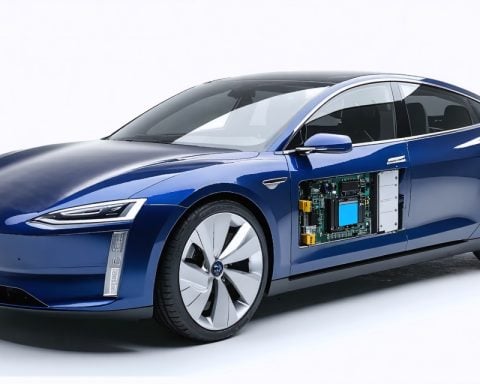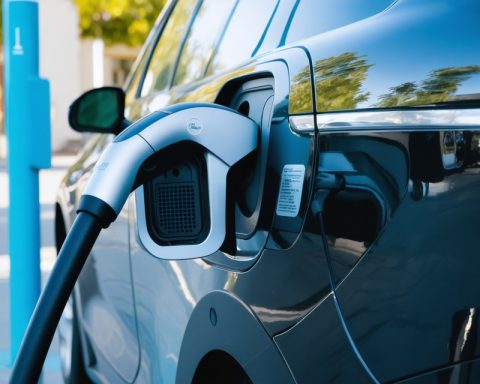Understanding the Ongoing Changes in Electric Vehicle Legislation
In a surprising policy twist, former President Donald Trump is poised to reverse significant electric vehicle (EV) mandates and subsidies implemented during President Joe Biden’s administration. In 2021, Biden charted an ambitious course for the automotive industry, aiming for half of all U.S. car sales to be “zero-emissions vehicles” by 2030, a move designed to combat climate change.
This policy shift was bolstered by the Inflation Reduction Act (IRA), which provided generous tax incentives, including a $7,500 credit for EV purchases, aiming to reduce household energy costs. However, Trump’s incoming administration has plans to roll back these eco-friendly measures, possibly catering to the desires of automakers who face challenging conditions in the EV market.
Despite a modest increase in EV sales, challenges abound. With only 64,000 public charging stations available for over 3 million EVs, many potential buyers are deterred by inadequate infrastructure and rising costs. Currently, EVs represent only 8% of the U.S. market, and this limited growth presents hurdles for manufacturers struggling to meet stringent mandates.
Trump’s new direction could ease pressures on automakers, allowing them more freedom to innovate without strict regulations. But this shift raises concerns about the U.S.’s ability to meet emission reduction targets, as transportation remains a major contributor to greenhouse gas emissions. Evoking a need for balance, experts suggest that while subsidies may be reduced, investment in charging infrastructure and innovative solutions is essential for the EV market to flourish sustainably.
Repercussions of Changing Electric Vehicle Legislation
The potential rollback of electric vehicle (EV) mandates and incentives in the United States prompts a reconsideration of our environmental and economic future. Electric vehicles are increasingly seen as vital to reducing greenhouse gas emissions and transitioning to sustainable energy solutions. Without a cohesive commitment to EV adoption, the consequences could unravel the progress made towards climate goals not just in America but globally.
A shift away from stringent regulations may result in a stagnation of innovation in the automotive sector. As automakers focus on traditional vehicles, the investments in greener technologies and infrastructure may dwindle. This could hinder job growth in clean tech sectors—an industry poised to create millions of jobs. Furthermore, the implications for air quality and public health are profound; greater reliance on fossil fuels translates to worsening pollution levels, impacting the most vulnerable populations.
In addition to environmental consequences, this policy change could set a concerning precedent for global standards. If the U.S. curtails its EV initiatives, other economies might follow suit, derailing international climate agreements. With over 70% of the world’s greenhouse gas emissions tied to urbanization and transportation, the need for robust EV legislation transcends national borders.
The future states of public infrastructure and investment trends will play crucial roles in determining whether the EV market can thrive. As consumer awareness grows, the demand for sustainable solutions will persist; however, the landscape’s adaptability may very well depend on consistent governmental backing. The lessons learned from this tumultuous period could shape the contours of global environmental policy for generations to come.
Future of Electric Vehicles: What the Legislative Shift Means
Understanding the Ongoing Changes in Electric Vehicle Legislation
The landscape of electric vehicle (EV) legislation in the United States is in a significant flux as former President Donald Trump prepares to reverse many of the mandates and subsidies established during President Joe Biden’s tenure. This article provides insights into the potential implications of these policy changes, the current state of EV infrastructure, and forecasts for the future of electric vehicles in America.
Key Changes in Legislation
Under President Biden, the ambitious goal was set for half of all U.S. car sales to be zero-emissions vehicles by 2030, supported by programs like the Inflation Reduction Act (IRA). This act provided tax credits of up to $7,500 for EV buyers, aimed at bolstering consumer interest and reducing energy costs for households. However, Trump’s administration appears ready to pivot away from these significant sustainability efforts, which raises questions about the future direction of U.S. automotive policy.
Current EV Market Overview
As of now, EVs make up only about 8% of the market share in the U.S., with a relatively modest increase in sales despite the ambitious legislative initiatives. One of the primary barriers to broader adoption remains the lack of adequate charging infrastructure. There are approximately 64,000 public charging stations available nationwide to support a growing population of over 3 million EVs. This discrepancy has made many potential buyers hesitant to invest in electric cars, primarily due to the anxiety surrounding charging availability.
Pros and Cons of Legislative Changes
Pros:
– Increased Autonomy for Automakers: Automakers may benefit from reduced regulatory pressures, enabling them to focus on innovation and design without the constraints of strict environmental mandates.
– Market Flexibility: Companies could pivot more easily in response to consumer demands and rapidly changing market conditions.
Cons:
– Environmental Concerns: A rollback on emissions mandates could hinder the U.S.’s ability to meet its climate goals, as transportation is a major greenhouse gas contributor.
– Stunted EV Growth: Reduced subsidies could lead to decreased consumer interest in EVs, exacerbating current market challenges and limiting the transition to sustainable transportation.
Infrastructure and Investment Needs
Experts emphasize the necessity for continued investment in EV infrastructure despite potential subsidy reductions. Enhancing the existing charging network is vital to alleviate consumer apprehension about transitioning to electric vehicles. Without a robust framework for charging, the growth of the EV market may stagnate, which goes against the long-term goals of reducing carbon footprints and promoting green energy.
Future Trends and Predictions
– Increased Demand for EVs: Despite current challenges, long-term projections indicate a growing demand for electric vehicles as technology improves and more models become available.
– Innovations in Charging Technology: The push for faster and more efficient charging solutions will likely continue, making it more convenient for users to adopt electric vehicles.
– Potential Legislative Revisions: As consumer demands and climate priorities evolve, future administrations may need to reassess their policies, potentially leading to a re-establishment of supportive subsidies or incentives.
Conclusion
The impending changes to electric vehicle legislation under a shifting political landscape present both challenges and opportunities for manufacturers, consumers, and policymakers. While the focus may shift away from stringent mandates, it remains critical to maintain momentum toward sustainable transportation through investment in infrastructure and continued innovation.
For more resources on electric vehicles and sustainability trends, visit Energy.gov.













